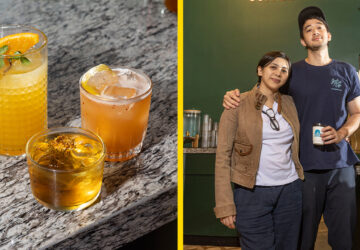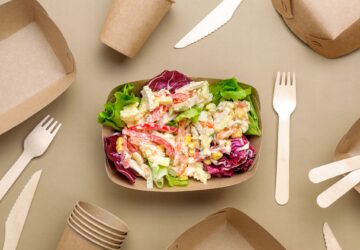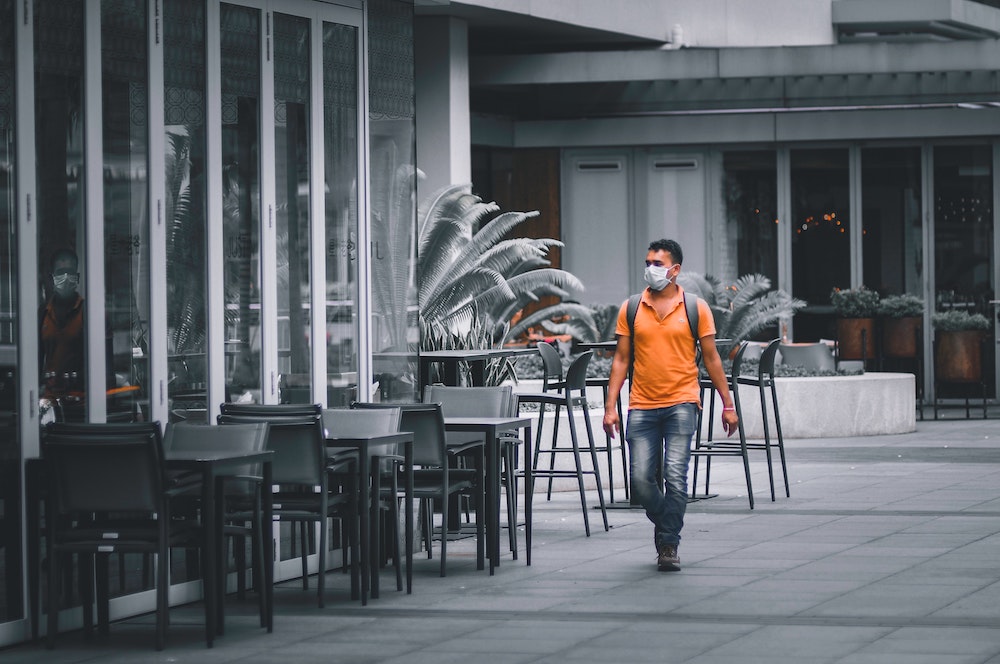Presidential Spokesperson Harry Roque officially announced today that dine-in restaurants and fast food establishments under modified general community quarantine (MGCQ) will be allowed to operate at 50 percent capacity starting June 1. Restaurants are required to comply with the minimum health standards set by the Department of Trade and Industry (DTI) to mitigate the spread of COVID-19.
DTI Secretary Ramon Lopez and National Task Force for Coronavirus Disease 2019 Chief Implementer Carlito Galvez Jr. held dine-in demonstrations on May 31, Sunday with three restaurants to check how well restaurant services can comply with DTI’s minimum health guidelines, which were sent to the participating establishments prior to the evaluation.
“We were very satisfied with the dine-in demonstrations of the three restaurants since they showed that the safety protocols are being implemented and proved that they are indeed doable. A lot of them exerted effort to demonstrate that the transmission can be minimized, if not totally prevented, while still having dine-in operations,” says Lopez.
The following are DTI’s minimum health standards (published on their official website) that shall be implemented in dine-in restaurants and fast food establishments allowed to operate under MGCQ.
Posting of information materials at the entrance and other prominent or conspicuous areas on the following:
1. Enforcement of a ‘no mask, no entry’ policy
2. Social distancing protocols of the establishment
3. Maximum number of allowable persons
4. Regular sanitation schedule and procedures (a 10-minute interval for sanitation in between customers dining in is required)
5. Availability of alternative methods of payment, if applicable
6. Availability of alternative methods of ordering and pickup of orders (e.g., online, text messaging)
7. Client-personnel interaction protocols
8. Enforcement measures
Requiring the the following at the entrance:
1. Floor mat or foot bath with disinfectant, unless other entrances such as mall entrances leading to the dine-in restaurants have already provided this
2. Queueing area while waiting to be seated with a roving officer for compliance with social distancing of one (1) meter between persons and that face masks are worn
3. A calibrated thermal scanner for temperature reading (Customers with a temperature of more than 37.5 degrees Centigrade, or a cough, colds or shortness of breath shall not be allowed inside the restaurant and shall be advised to proceed to the nearest hospital)
4. Rubbing alcohol that can be easily sprayed on the hands
5. Health checklist for customers to fill out
Installing the following equipment and system at the workplace:
1. Properly sanitized tables and chairs (after each customer’s use)
2. Distancing of tables and chairs to at least one meter apart on all sides
3. Face-to-face seating allowed only with proper dividers
4. Visible floor markings for guidance of clients in queueing, preferably color-coded
5. Proper ventilation in the establishment
6. Visibility and accessibility of sanitizing equipment and tools
7. Provision of food menus per table
8. Contactless order-taking
9. Cover pieces of furniture of porous materials in plastic for ease of sanitation
10. Personal effects of personnel in plastic bags and stored in an area inaccessible to clients
11. Clean trash bins for used papers and used tissue
12. Clean washrooms and toilets with sufficient soap, water and tissue and toilet paper
13. Disinfection of high-risk areas such as order and bar counters, every 30 minutes.
Taking dine-in orders:
1. For counter menus, counter calls the assigned number, immediately takes customer’s order/s, receive payment, sanitize hands and advise customer to sanitize hands and to wait for order at their assigned table
2. For single-use table menus, upon entry, customers shall be escorted to assigned table with corresponding number, who will select order by checking choices in the menu placed on the table
3. For non-single use menu, upon entry, shall be escorted to assigned table with corresponding number, who will select orders from the menu placed on the table
4. For b and c, both customer/s and server sanitize hands after placing order and/or payment
5. For b and c, handing of payment to the server after confirming orders is encouraged
Kitchen protocols:
1. Group workers according to task to reduce transmission throughout the workplace in the event one of them becomes ill
2. Establish directional arrows on the kitchen floor to control flow of traffic and reduce interaction between cooking and clearing area
3. Restrict access into food preparation area from workers and other staff who are not involved in food preparation
4. Wearing of mask is a must
5. Unnecessary conversations among workers should be avoided while in the process of preparing or cooking food
6. Clean appliances, containers, and equipment between use
7. Sanitize high touch equipment, such as freezer, refrigerator, and oven handles and knobs in accordance with applicable government protocols
8. Workers should wash their hands properly before and after leaving the kitchen and using or touching any equipment
9. Employees should not spit on kitchen floors and sinks, only on trash bins and areas designated for trash
Ensuring proper health and safety of all personnel at all times
1. No work for personnel with COVID-19 symptoms, or with exposure to COVID-19 patients
2. Checking and recording of personnel’s temperature check before and after work shift, as well as whereabouts before work to be sent to the restaurant or fast food manager via SMS
3. No wearing of jewelry (e.g., rings, bracelets, watches, earrings, exposed body piercings, etc.)
4. Observance of proper personal hygiene (e.g. clipped fingernails, observance of company-imposed personal sanitation, etc.)
5. Strict observance of social distancing measures in all parts of the establishment including cashier counter, beverage bar, kitchen and back areas
6. Washing of hands at least once every hour or after every encounter with guests
7. Keeping the distance of 1.5 meters between personnel
8. Mandatory wearing of personal protective equipment (PPE) such as, but not limited to, face mask, face shield, gloves, and hair cap
9. Mandatory wearing of closed shoes
10. Observance of proper disposal of disposable equipment, utensils and plates
11. Observance and enforcement of client-personnel interaction protocols
12. Mandatory declaration of health and whereabouts prior to every duty in case contact tracing becomes necessary
Setting up of service stations:
1. No buffet and self-service areas for food bars, condiments and utensils
2. Designated area for takeaway/pickup
3. Separate hand washing sink/basin for kitchen staff and dine-in customers
4. Contactless drive-thru counters
5. Closure of play areas
Mandatory procedures upon exit:
1. No physical contact during payment
2. Provision of small trays for accepting cash
3. Offering alternative modes of payment, if applicable
4. Regular sanitation of high-contact areas and surfaces (e.g., door handles, common tables, etc.)
Delivery whenever applicable:
1. Take orders through phone calls, email or any online mode
2. Implement staggered start times for food delivery drivers to prevent crowding at dispatch locations
3. Assign drop-off sites right outside a door outside the building with easily noticeable signage or markers
4. Coordinate with delivery drivers regarding drop-off locations and other instructions prior to date of delivery
5. Adjust practices for proof of delivery to avoid in-person signatures through the use of online confirmation
6. Include vehicles and drivers in cleaning, hygiene and wearing of mask protocols
NOTE: These guidelines shall be on top of the DTI-DOLE Interim Guidelines on Workplace Prevention and Control of COVID-19 dated Apr. 30, 2020 as well as the Good Manufacturing Practices in restaurants and fast food establishments.





